This post may contain affiliate links. Please read our disclosure policy.
Slow Roasted Salmon is a recipe I can always count on. The gentle heat creates buttery, meltingly tender results every time. The low temperature takes the stress out of cooking salmon, giving you a generous window before it goes from perfectly done to overdone.

Just brush the salmon fillet with olive oil, season it simply, and let it cook slowly until it’s just opaque. I love finishing it with a quick lemon-caper butter sauce and fresh herbs, but you could take the toppings in any direction to match your meal. The cooking method itself is foolproof; it’s the garnishes where you get to be creative.
Table of Contents
Ingredients to Make Slow Roasted Salmon
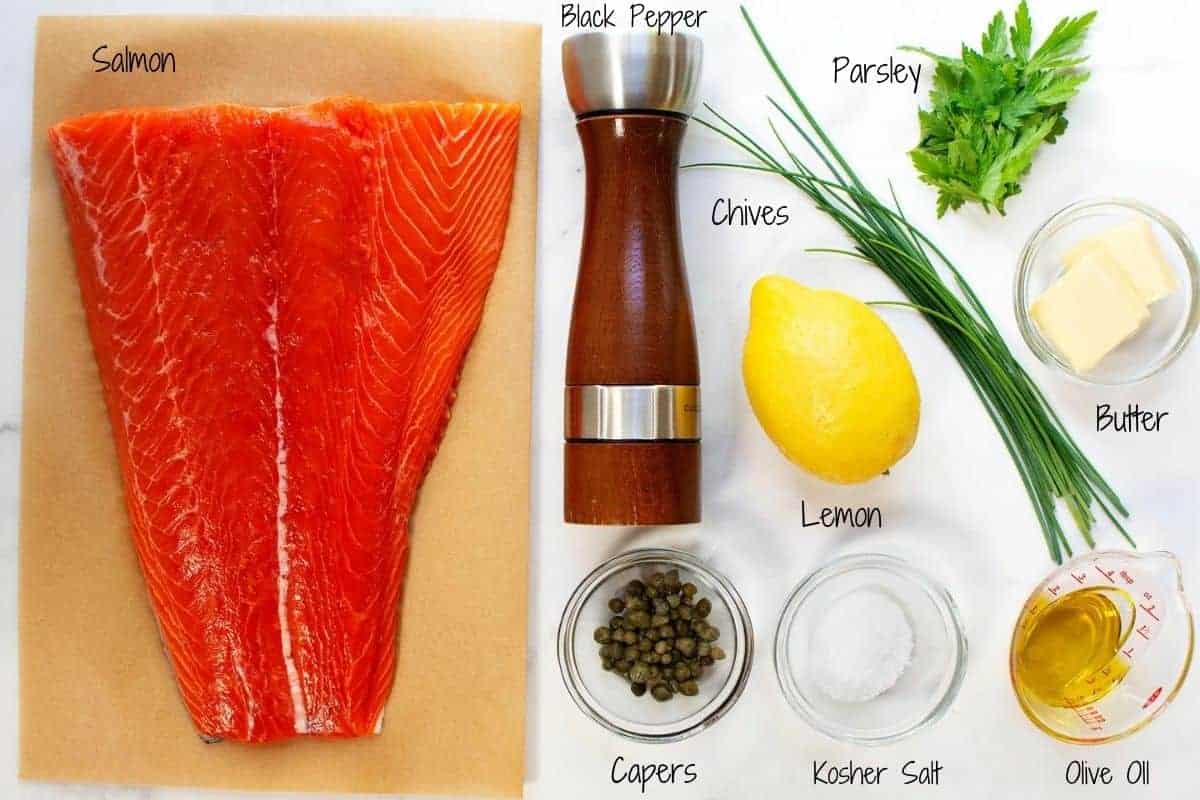
- Salmon: Ideally a wild salmon fillet of uniform thickness. A tail cut works just fine, but the thinner areas will cook more than the thickest parts. Salmon varieties to look for: King Salmon (also called Chinook Salmon), Coho Salmon, or Sockeye Salmon.
- Olive Oil: Your favorite extra-virgin variety.
- Kosher Salt and Freshly Ground Black Pepper
- Butter: Salted or unsalted butter – whatever you have on hand.
- Capers: Ideally tiny, firm, flavorful non-pareil capers, rinsed and drained.
- Lemon: You’ll need one lemon to juice for the sauce and a second if you’d like to serve your salmon with lemon wedges.
- Chives: Look for perky, deep green chives.
- Parsley: Fresh flat leaf or curly parsley – use the variety you like best.

Salmon Cooking FAQ
You can cook salmon on high or low heat, depending on the texture you’re looking for. You’ll find recipes as low as 200˚F and as high as 500˚, or broiled salmon that, on full broil, cooks at 550˚F.
Cooking salmon can be tricky because It’s so easy to overcook, particularly when you are cooking it at a high temperature. And, like other meats, it will continue to cook from residual heat once you remove it from the heat source (oven, grill, or stovetop), so it’s important to remove it before it reaches your target temperature.
Yes, you can eat salmon skin, but it’s best when crispy. This is easiest with pan seared salmon. With slow roasted salmon, you could crisp the skin in a skillet at the end of cooking, but you run the risk of overcooking the flesh.
You’ll know your salmon is finished cooking when the tip of a knife meets no resistance and the flesh is slightly opaque (it will be less opaque / milky white with slow roasted salmon than salmon cooked at higher temperatures). For internal temperature, the FDA recommends 145˚F, but many chefs recommend 125˚F.
For slow roasted salmon, cook at 275˚F.
Slow roasting salmon is the best way to keep it moist when baking!

Recipe Options:
Feel free to experiment with different sauces and aromatics to finish your salmon. Here are some suggestions:
- Prepare this salmon recipe, but add minced fresh garlic cloves instead of capers to the lemon butter mixture and finish with fresh dill or a variety of fresh herbs and lemon zest. Or drizzle with my Lemon Garlic Butter Sauce.
- Top cooked salmon with a Mango Avocado Salsa or Pico de Gallo.
- Drizzle with a mixture of soy sauce, toasted sesame oil, and a touch of honey. Finish with a shower of sesame seeds and thinly sliced green onion.
What To Do with Leftovers
If you’re fortunate and end up with leftover salmon, it’s wonderful the next day served cold on a salad or broken up and tossed with pasta (like Garlic Butter Noodles) and sautéed vegetables for an easy meal. Or do what we usually do and make these fabulous Fish Cakes – typically made with leftover baked halibut or cod, but salmon works great too!
What to Serve Alongside
- Arugula Salad (Just 6 simple ingredients in this salad that everyone loves.)
- Sugar Snap Pea Salad (When sugar snap peas are at their spring peak, this is the way to go.)
- Lemon Garlic Asparagus (The perfect balance of rich and bright, this is a 10 minute side dish that you’ll learn to make by heart.)
- Strawberry Spinach Salad (We enjoy this on repeat when strawberries are in season.)
- Creamy Cucumber Salad (This would be particularly good with the dill topped recipe option above!)
How to Make Slow Roasted Salmon
Step 1: Place salmon fillet in a rimmed baking sheet, skin-side down. Brush with olive oil and season with salt and pepper. Bake 25-35 minutes until fish is lightly opaque and a knife tip meets no resistance. Remove from oven.
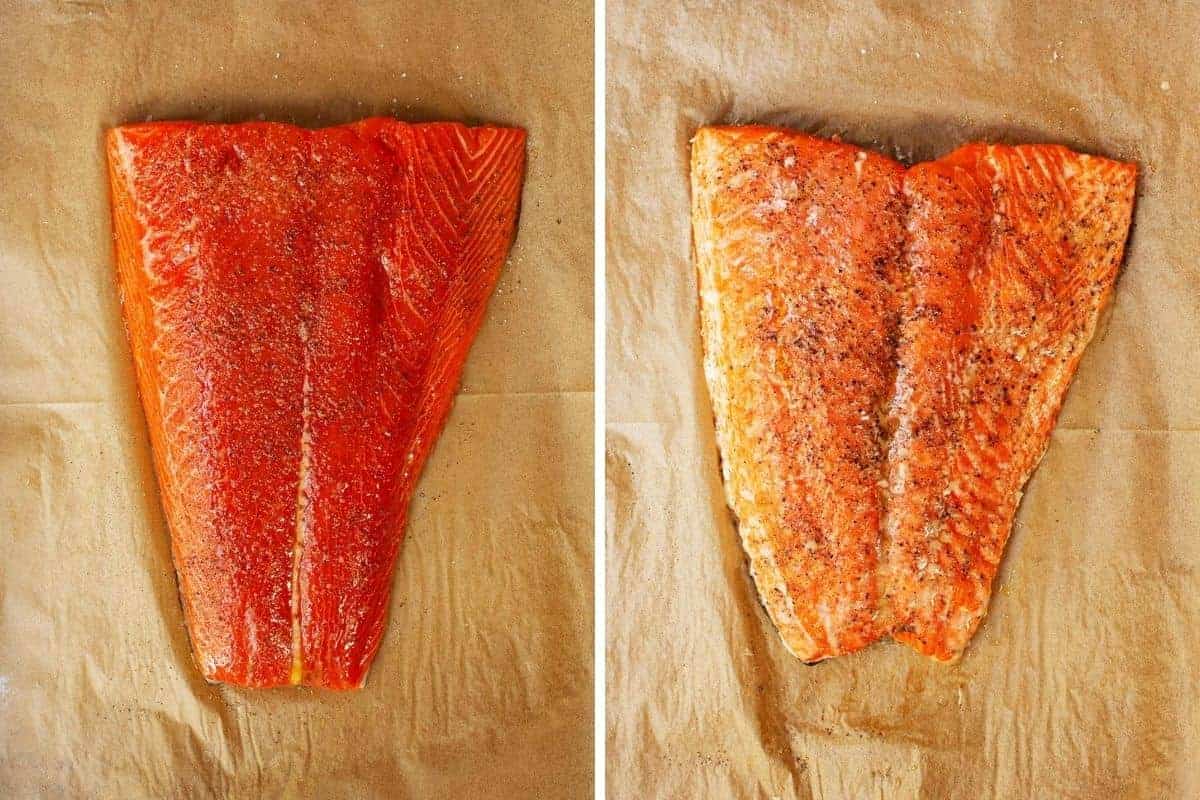
Step 2: While salmon rests, melt butter in a small skillet; stir in lemon juice and capers and remove from heat.

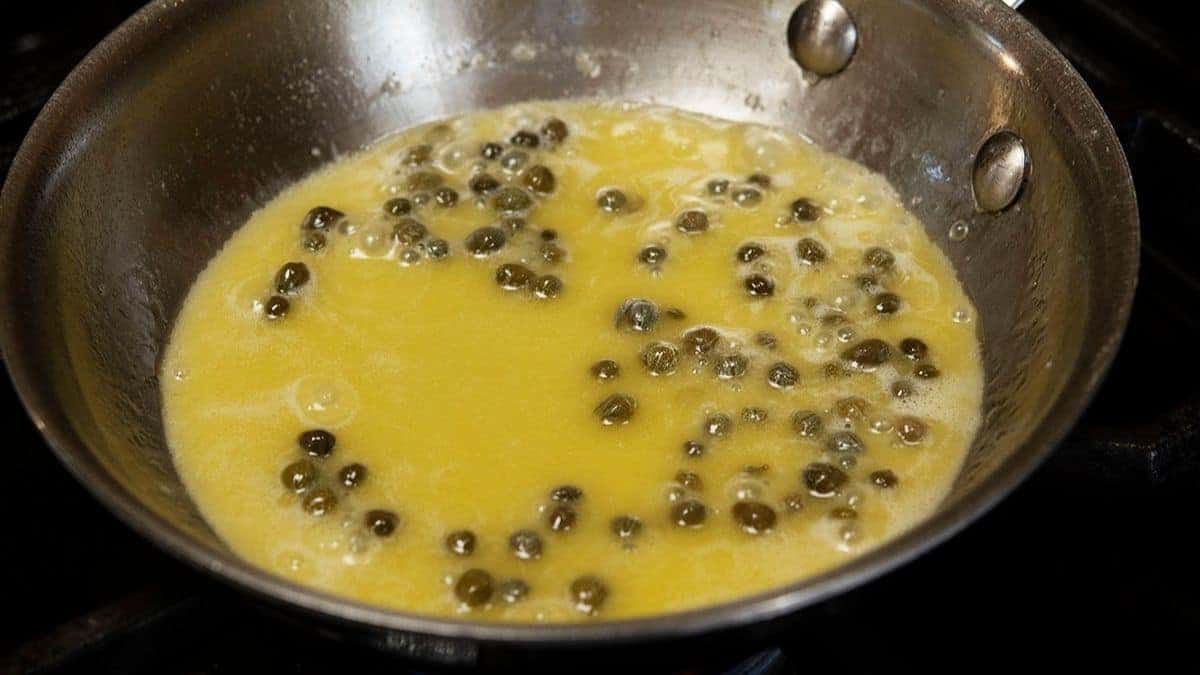
Step 3: Transfer salmon to serving platter and drizzle with sauce; finish with minced chives and parsley. Serve with lemon wedges if desired.
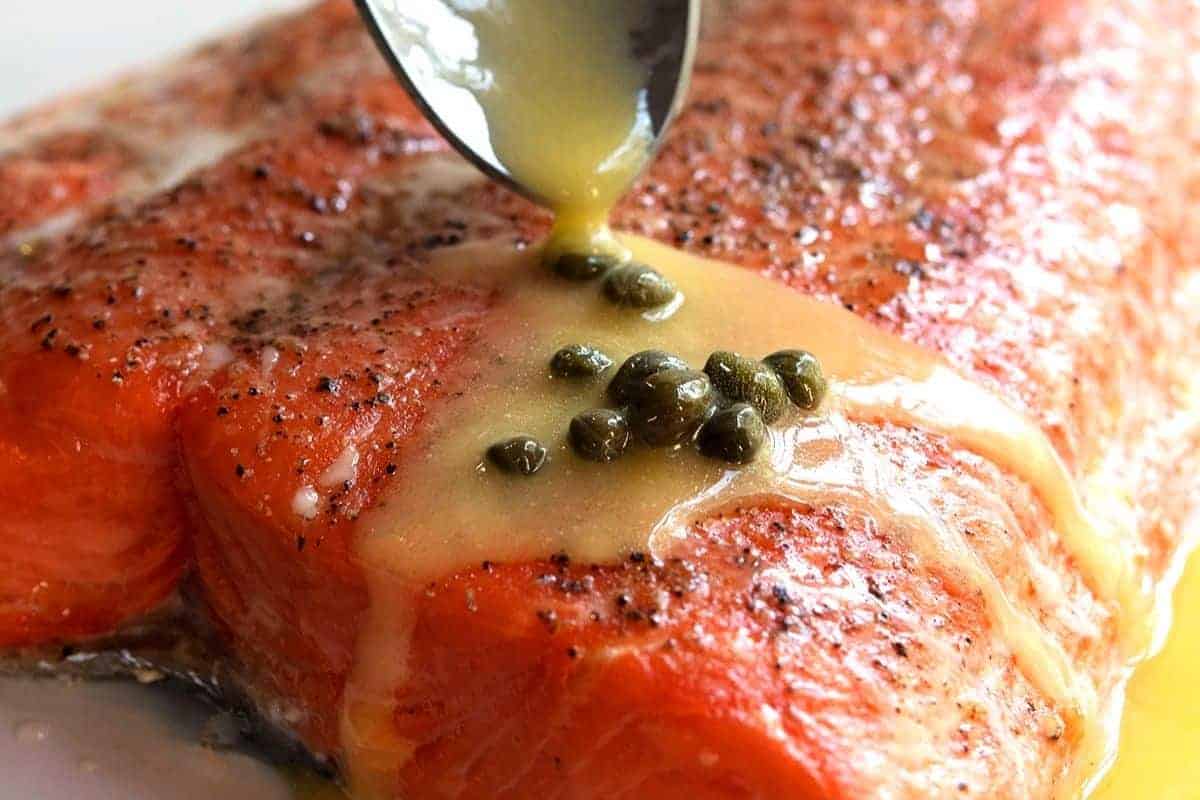

Slow Roasted Salmon

Ingredients
- 1 1/2 pound salmon filet ideally wild
- 1 tablespoon extra-virgin olive oil
- Kosher salt and freshly ground black pepper
- 2 tablespoons butter
- 1 tablespoon capers
- 1 small lemon juiced, 2-3 tablespoons
- fresh lemon wedges for serving, optional
- 1 tablespoon minced chives
- 1 tablespoon minced flat-leaf parsley
Instructions
- Preheat oven to 275˚F. Line a rimmed baking sheet with parchment paper.
- Place salmon filet on prepared baking sheet and brush with olive oil. Season with salt and pepper.
- Bake skin-side down 25-35 minutes, until salmon is slightly opaque and there is no resistance when pierced with the tip of a knife. Remove from oven and let stand 5 minutes.
- While salmon rests, melt butter in a small skillet over medium heat. Stir in capers and lemon juice. Remove from heat.
- Transfer salmon to serving platter and drizzle with melted butter mixture and sprinkle with chives and parsley. Arrange lemon wedges on platter if desired and serve.
Nutrition
Nutrition information is automatically calculated, so should only be used as an approximation.

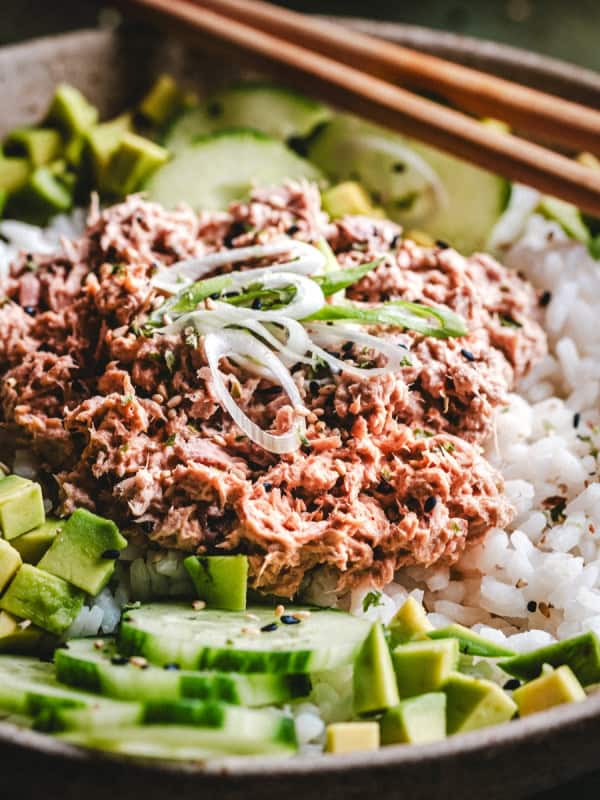
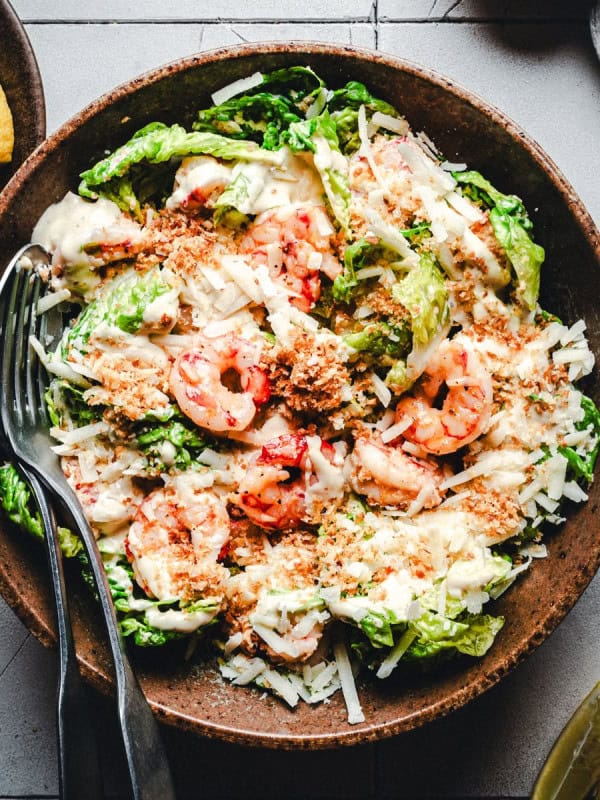











Made this for dinner, using wild caught sockeye fillets since there are just 2 of us.
Really like the flavor of the slow roasting, really easy.
I’m so glad you enjoyed this, Carmen!
This is a wonderful recipe. I typically just pan-fry my salmon in browned butter. Fast and easy for me, since I’m the only one who eats salmon! But the slow-roasting is a fabulous idea, and the resulting dish is gorgeous.
Thank you, Mimi! Your method sounds fantastic too.
Sounds amazing. Looking to cook ahead and serve cold. Would this recipe be appropriate?
Hi there, Laurel. Yes, absolutely! We enjoy the cold leftovers on salad whenever we make this.
Made this with King Salmon, the arugula salad mentioned, pesto pasta and french bread. Really good. I so very much wanted to add garlic to the butter sauce but made as instructed and likely won’t mess with garlic next time either. My only note is personally I was very liberal with the parsley/chive combo.
So glad you enjoyed this, Yukon! Thank you for your cooking notes too.
Marissa, 10 stars for this absolutely tender and delicious dish! Flaky fish, perfectly slow cooked. I used a thermometer to get the perfect temp. The sauce is light, so flavorful and just perfect on the fish. I now have my favorite way to make salmon! Amazing!
Aww…Beth, you made my day. So glad this was a hit!
Marissa, this is a beautiful salmon dish. I’ve been making a lot of salmon lately, as I especially love it in the summertime. I’ve poached it slowly, but never roasted it this way. I must try it! And that caper sauce — yum! 🙂 ~Valentina
I bet poaching it slowly is delicious too! We poach chicken all the time, but I never think to poach fish. Thank you, Valentina!
I love the look of this texture, Marissa! You are so right, it’s so easy to overcook salmon and then you end up with something quite dry and unappetising. I am in love with the sound of this butter too, yum! What a perfect weeknight dinner.
Thank you, Katerina! I love when something this good is easy enough for a weeknight!
It’s been a while since I slow roasted salmon. Your photos have me drooling and wondering why I don’t make it more often! Obviously I have seen the error of my ways and I’ll be preparing your beautiful salmon recipe PRONTO! You knocked this out of the park – it looks truly perfect!! Pinned!
aww…thanks so much, Cheyanne! xo
What a cool idea! Whenever we make salmon, we typically either grill it or bake it. The idea of roasting salmon at a lower temperature is intriguing. I totally have to try this out now! Looks like a delicious recipe, Marissa!
Thank you, David. I hope you’ll give this a try!
Did you know that just last night I had to toss a beautiful piece of salmon!? So sad. I thawed it overnight in the fridge, but when I went to cook it, it had a bit of a slime to it. I didn’t want to risk it! Anyway, salmon is one of my fave things to eat, so now I definitely have to try this slow roasted technique of yours!
Oh no…that’s such a crummy feeling. Hope you’ll give this method a try!
I’ve never cooked salmon low and slow like that but, from your pics, it looks like I need to try! Looks incredibly tasty, Marissa, and just perfect for date night at home with a glass of vino 🙂
Being the fish love that I know you are, I think you’ll love it, Dawn!
Totally looks melt in your mouth tender Marissa! My husband Tom would love the lemon and capers. Nice and light, so it’s the perfect summer dish. Can’t wait to try it!
Yay! I hope that you and Tom love it, Mary Ann!
The salmon did turn out really tender and juicy. I too like to slow roast the salmon once in a while..my favourite is still pan sear them until CRISP..because the skin is the BEST part :-))
That crispy skin is pretty delicious!